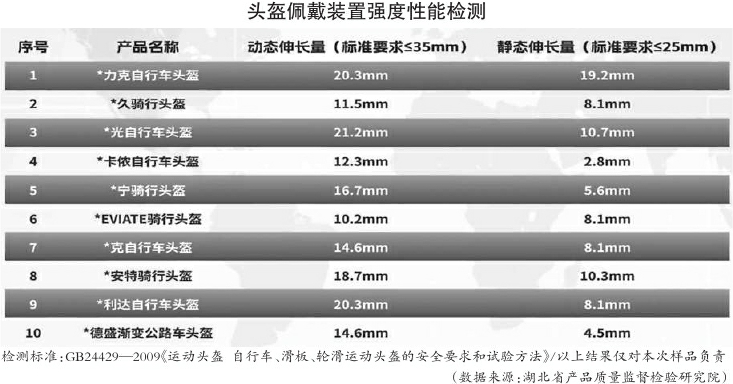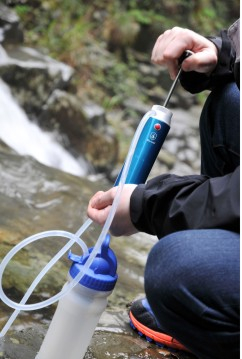A Brief History of Friends
Written for the Wild Country Catalog
by Ray Jardine - April 19, 1998
译注∶今天攀岩者人人不可或缺的保命工具之一机械塞也叫活动岩楔(英文称为Friends,就是“朋友”的意思),发明其实不过二十几年,这项重大的发明大大的提升了自由攀登的水平,许多看似危险的路线也都有了突破,最重要的是它有效的确保了我们的安全,使我们能无后顾之忧的享受攀岩的乐趣。这篇短文让我们了解当年作者是如何发明Friends的。
想像一下有朝一日攀岩者穿戴特制手套与岩鞋像蜘蛛般的攀登光滑如镜的大峭壁,然一旦失足坠落却可像蜘蛛似的由安全吊带射出绳索连结岩壁……当然,只有待发明者开发出这种技术时,我们才会无疑地认为它聪明无比。然而,很明显的由於我们的后知后觉、后见之明,目前,尚无人能想像出这种技术的细节。
同样的在25年前当我发明Friends时情形也是一样,虽然对这种东西的需求如此殷切(起码对我而言),但是实际上要如何设计出来,对一般人而言却是毫无概念。
我从1971年开始尝试双滑动楔子进行这项发明,目标是寻找一种装置可以自己固定在裂隙中,但若用力拉它则会产生很强的支撑力量。我以我航天工程的背景去分析、计算这种机构时,却发现它根本是不稳固的,不同组合的楔子内部摩擦力降低了它们支撑的力量,而且在许多情况下这种装置会被扯出来。由於这个装置是我本身要用的,因此我不打算在安全上做妥协。
1973年夏天Mike Lowe向我推销他兄弟Greg Lowe发明的新凸轮岩楔,他声称这种等角凸轮的设计没有问题。本能的我发现到这个概念应该可行,也许这正是我在寻找的构想。我买了其中三个,不幸的是当我第一次用它们时,这三个岩楔都从裂隙中弹出,顺著绳子滑到确保者处,害我在没有任何保护下爬完5.9的拳头裂隙,这也是我最后一次使用它们了。
■Greg Lowes orignial design --- Anchordevice for mountain climbers
等角螺旋在自然界随处可见,从贝壳、球果、气压梯度到涡卷星云,基本上这仅是说明均匀扩张的一种方式,笛卡尔在1638年曾以数学模式描述之并称其为等角螺旋,至此等角凸轮广泛见於许多机械装置。我不知道Greg从何获得此一主意用於裂隙确保,或许是从犹玛攀升器,因其使用类似的等角凸轮钳住绳子,无论如何我们都要感谢Greg将此概念引进到裂隙确保技术上。
由概念到创造出确实可行的装置原来并不容易,回顾来看,它需要有航天机械技能,探索的心加上持续的动力与对攀岩的热情――或许是一种少有的组合。接下来好几个月我在Bill Forrest的机械工厂制作凸轮的原型,并在附近岩场试用,晚上进行改良,结果是产出数以箱计的废弃原型。
附带一题的是许多原先废弃不用的设计后来被许多公司加以改良生产,虽然这是我从无到有发明、抛弃的,但毕竟并未完成它们,我采用更好的方式来超越这些不良的设计。
一天,当我试完所有可能的组合后,从Creator那儿我又得到了好主意,使用两个反向、独立弹簧驱动的凸轮,像汽车的四轮独立悬吊系统一般,每个凸轮可以对应不同规则的岩面。我拿一组“Quads”到岩场试用,这组弹簧驱动的活动凸轮,用高张力螺丝连结一起,然后用一根铁杆当连接杆,当然这是没有制动机构的。在Split Rocks的Fantasia路线(5.8)上,我攀到一处岩阶将Quad塞入手掌大小的裂隙中,然后放开双手,就在同时我知道这就是我寻找多时的答案了。
■Friend P1-1, photo R.J.
1973年秋末我制作的第一个真正堪用的Friend。这是花了数个月的精研,数以百计的构思才有的心血结晶。它没有制动机构,连接杆也不是最佳的设计,但足以测试个别凸轮的构想是否可行,这组原型基本上只在Fantasia用过一次(Split Rocks, CO)。
次年春天(1974)我拿著这组Friends到优胜美地,并且用它们攀登了无数困难的路线,以目前科技的眼光来看这组Friends算是相当粗糙、有限的,因为只有数个2-1/2和3-1/2的大小。不过,这已证明了它们的价值,在季节末我们三人甚至打算用这些Friends以一天时间挑战Nose路线。然而一场突如其然的大雨将我们困在Great Roof下达三小时,迫使我们不得不露宿在Camp V。不过,我们终究是以28小时完成了,将原先三天的记录缩短一半以上。
■Friend P2-2.5, photo R.J.
这是我第一个使用的原型,他的大小相当於今天2-1/2的Friend,我做了三个这种大小以及两个3-1/2大小的。我在1974年春季的攀登季节中一直使用著它们,最后并与Lou Dawson 和 Kris Walker 以1.5天(或20攀登小时)完成Nose路线,以往这是需要三天时间的。
接下来的六年我持续的将原型做改良,并非为商业目的,主要是著眼於数以千计的路线上,多数在优胜美地。由於我的绳伴是固定某些人,所以这项发明几乎处於保密状态,因为我有点固执并担心制造商会将它剥夺。同时,我也给了Lowe兄弟许多的时间来改良他们原先的设计,虽然他们没有。
1977年Mark Vallance邀请我到英国帮他制造Friends,Mark是一位专注、多才多艺的人,同时也是第一位预见Friends会被广泛使用的人,当然以目前来看这是无庸置疑的,但在当时却不如此,Mark应是首位将Friends推上市场的人,次年Mark并成立了Wild Country开始销售Friends。
■Friends, photo R.J.
这些是后来一代的原型,1975到1978年间我用在优胜美地的攀登中,其时Friends已经量产上市。每种大小我都有五个。
如果要问我对今天到处充斥不同品牌的Friends有何看法?首先,我会认为部分根本是吹嘘的次级品,如同我不会找赤脚医生做脑部手术一样,攀岩者不应选购劣质的次级品、便宜的材料,如果你的架上有任何这类的Firends应该考虑剔除它们。其次,目前市面上有些玩意并不稳固,起码我个人认为如此,例如,三个凸轮的设计,如同三轮车终究被市场所淘汰,原因之一就是其先天上不稳固,还有其他小玩意也可能造成不稳定,千万不要将性命交到它们手里。第三,有些所谓的改良实际可能只是为了专利回避而已,我怀疑它们终究会消失,所以千万要注意夸大不实的推销手法。最后,目前原始专利期限已将届满,市面上也会出现大量抄袭的产品,然而我个人还是只推荐最忠於原味的品牌。
译注∶Ray Jardine於1973~74年冬天发明Friends(当时他与他的朋友如此称呼它),1974年春天开始於优胜美地使用该项发明,那年秋季他并於Summit杂志投稿一篇文章(A VISION OF THE LAND OF SEM⌒by Ray Jardine)叙述使用这项发明攀登的两条路线,但该文并未被接受,原因是其纯科幻式的描述方式令当时主编觉得不可思议(当年曾目睹Friends的人不超过一打),或许是其刻意隐藏这项发明,所以迟至1978年后Friends才正式上市。
(译注∶Friends原始专利――Climbing aids为美国专利字号4184657,申请日期May 30, 1978,公告日期Jan. 22, 1980,专利期限自申请日起算20年,所以目前应已届满。)
Friends的发明者Ray Jardine
――――――――――――――――――――――――――――――――――――――――――――――――――
原文:
A Brief History of Friends
Written for the Wild Country Catalog
by Ray Jardine - April 19, 1998
Some day we climbers may wear special gloves and shoes enabling us to scale blank walls like spiders. Should we fall off, like spiders our body harnesses may instantly attach safety lines to the rock. If and when inventors develop this technology, we will no doubt consider it clever . . . but obvious - thanks to our 20-20 hindsight. But for now, none of us can envision the details.
And so it was with the Friends 25 years ago when I was inventing them. The need was apparent, at least to me, but the actual configuration was elusive to everyone.
Seeking a devise that would anchor itself in a crack, and hold with greater power the harder the pull, I began the inventive process in 1971 with a dual sliding wedge design. Taking advantage of my aerospace engineering background I analyzed this configuration and found it mathematically unsound. The internal friction between any kind of wedges reduce their holding power, and in many situations such a device could pull out. I was inventing for my own use, and was not about to compromise safety.
The summer of 1973 Mike Lowe tried to sell me a few of his new Cam Nuts, which he said his brother Greg had invented. They worked, he explained, on the principle of the constant angle cam. Intuitively I saw that the concept was viable, and felt that here might be the idea I had been looking for. I bought three of them. Unfortunately the first time I used them all three flipped out and went sliding down the rope into my belayers arms, leaving me running out a 5.9 fist crack unprotected. That was also the last time I used them.
The constant angle spiral is ubiquitous in Nature, from seashells and pinecones to swirling barometric pressure gradients and the great spiral nebulas. Really, it is just an expression of uniform growth. Descartes described the principle mathematically in 1638, calling it the equiangular spiral. Since then, constant angle cams have been used in uncountable mechanical devices. I dont know where Greg got his idea of applying the concept to a crack anchoring device. Perhaps it was from the Jumar ascender, which uses a more-or-less constant angle cam to clinch the rope. At any rate we have Greg to thank for introducing the concept to crack anchoring technology.
Configuring a workable device, however, proved to be an enormous task. In retrospect it took someone with aerospace engineering skills, a questing mind coupled with extreme motivation and a passion for climbing - something of a rare combination perhaps. For months I worked in Bill Forrests machine shop building camming prototypes, testing them at the local crags and innovating design improvements in the evenings at home. In the end I filled a couple of sizable boxes with discarded prototypes.
Many of these designs were later backwards engineered on the basis of Friends by other companies, and are in production today. This despite the fact that I found them wanting from the beginning, and discarded them. For after all, I did not have to compete with myself, and therefore I had the luxury of moving beyond inferior designs.
Then one day after trying absolutely everything I could think of, and continually straining my mind for ever more ideas, the Creator enlightened me with the concept of a double set of opposing and independently spring loaded cams. Like wheels of a car having independent suspension, each of these cams would be able to adjust to widely varying surface irregularities, within limits of course. I put one of these "quads" together and took it to the crags for testing. The cams were spring loaded against each-other, and they were held together with a high-tensile steel bolt. But the bolt was wrapped with a piece of ordinary strap iron as a stem, and of course the device lacked any kind of trigger. On a 5.8 route which I called Fantasia, located at Split Rocks, I climbed to a stance where I could almost let go with both hands, and managed to squiggle the Quad into a hand-sized crack. By the way it behaved I knew instantly that it was the solution to the problem I had been working on all that time.
This is Friend #1, my first functioning model built in the late fall of 1973. It was the product of months of prototyping literally hundreds of other ideas that ultimately led me to this. It had no trigger, and the stem was completely make-shift, just enough to allow testing of the independent-quad concept. This unit went up only one climb, Fantasia at Split Rocks, west of Lyons, CO.
The following spring, 1974, I took my first set of working prototype Friends to Yosemite and climbed dozens of difficult routes with them. These units were rough hewn and extremely limited by todays standards, and I had only a few 2-1/2s and 3-1/2s. But they certainly proved their worth, and at seasons end three of us used them in an attempt to climb the Nose in a day. Three hours of downpour late that afternoon immobilized us beneath the Great Roof and forced a bivy at Camp V. But we did finish in 28 hours total climbing time, and managed to cut the previous three-day record in half.
This is my first working prototype. In size it is equivalent to todays 2-1/2. I made three of these, and two size 3-1/2. And used them the full Spring climbing season 1974, culminating with an ascent of the Nose with Lou Dawson and Kris Walker, in 1.5 days, or 20 hours total climbing time. Previous record was 3 days.
For the next six years I continued making improved prototypes. My focus was not in their commercial application, but on the literally thousands of routes I used them on, mostly in Yosemite. My partners were limited in number and "sworn to secrecy" because I felt a little paranoid about the idea being ripped off by some manufacturer. Meanwhile, I certainly did give the Lowe brothers plenty of time to introduce workable camming devices of their own invention, which they did not.
In 1977 Mark Vallance invited me to the UK to help him start manufacturing Friends. Mark is a highly dedicated and gifted individual, and was the first person to foresee the widespread appeal of Friends. Friend marketability is obvious now, but it certainly was not then, and Mark was the visionary who made it happen. The next year Mark founded Wild Country and started selling Friends.
This are the later generation prototypes that I used for most of my Yosemite climbing from 1975 to 1978 when the production units went on sale. I had five sets of each size.
What do I think of todays preponderance of Friend look-alikes and so-called improvements? First, I feel that a certain amount of it is blatantly inferior. In the same vein that people would not go to quacks for brain surgery, climbers would be unwise to entrust their lives to cheap Friend imitations made of inferior materials. If you have something like this on your rack, you might consider getting rid of it. Secondly, there are all sorts of gizmos out there which, in my mind at least, are theoretically unsound. Three cam units are one example. Analogously, three wheeled vehicles were banned from the marketplace years ago because of their inherent instability. Many other gizmos out there are mathematically unsafe, and I certainly would not bet my life on them! Thirdly, there are a number of so-called improvements which in reality are nothing but patent work-arounds. I suspect that they will fade from vogue over time - meanwhile we might be aware of the hype. And lastly, now that the Friend patents are expiring we are seeing virtual-copies by major manufacturers. I believe in higher laws, which is the main reason why I recommend only the genuine articles - Friends. These are made by Wild Country and described in this catalog.









 |
|